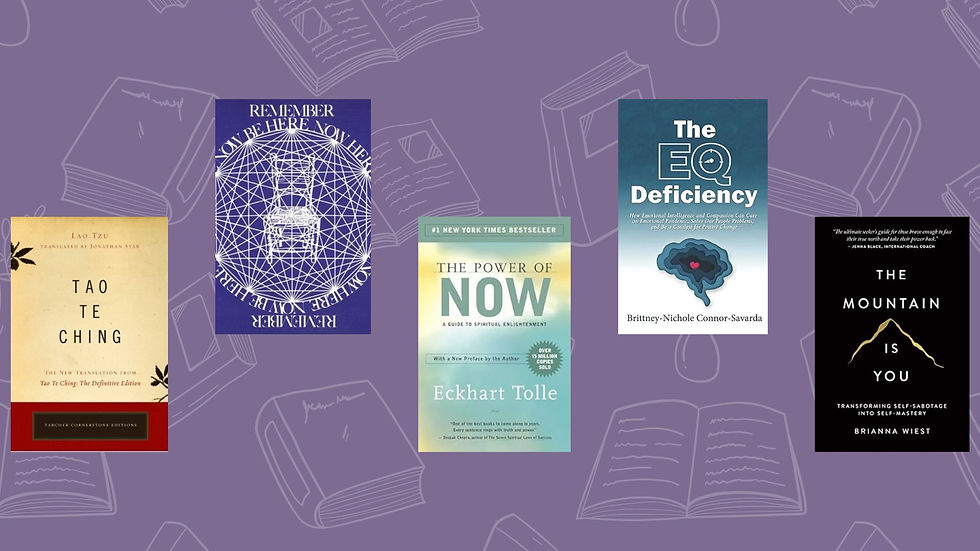Compassion: To Suffer With or Together
- Brittney-Nichole Connor-Savarda
- Jun 1
- 4 min read

The day before Mother's Day, I found myself in the woods asking the universe a question I didn't know how to answer: Why do I feel so angry all the time?
Before becoming a mother, I believed I had done the work. I had processed my trauma, managed my anxiety, tamed the obsessive thoughts that once ruled my days. I was the person others came to for healing. I was calm, centered, purposeful.
Then I had my son, and with him came a rage I didn't recognize. Not directed at him—never at him—but a consuming fire that made me want to destroy things, to put my fist through walls, to stop caring whose feelings I hurt in the process. The intensity frightened me. I hadn't felt this way in years.
So there I was, among the trees, asking for understanding.
What came back was this: Your anger is control in disguise. You cannot bear to witness suffering without trying to fix it.
I realized that I had been living under the assumption that if everyone—myself included—just did the "right" things, suffering would cease to exist. I had been chasing perfection as a way to avoid pain, both mine and everyone else's. When life inevitably fell short of this impossible standard, I responded with judgment, frustration, and yes, rage.
But here's what I learned sitting in that sacred space: Compassion doesn't mean what I thought it meant.
The word itself comes from the Latin "to suffer with." Not to fix, not to solve, not to make better. To suffer with. To be present in the mess without needing to clean it up.
We live in a culture that treats suffering like a problem to be solved rather than an experience to be understood. We medicate it, distract from it, shame ourselves for it. But what if our pain—when met with gentle awareness—is actually trying to tell us something important?
What if the parts of ourselves we most want to hide are the very bridges that connect us to our shared humanity?
I think about a friend who struggles with addiction. The old me would have wanted to fix them, try and control their choices, and become frustrated when they relapsed. But compassion asks something different of me. It asks me to sit with them in their pain, to understand that their addiction is not who they are but how they've learned to cope with suffering I may never fully understand.
This doesn't mean enabling harmful behavior or accepting what shouldn't be accepted. It means recognizing that we are all broken in some way, all carrying wounds both visible and invisible. Some of us mask our brokenness with achievement, others with substances, still others with anger or the need to control.
Beneath all of these strategies lies the same tender heart seeking safety and connection.
This extends to how we treat ourselves, too. Sometimes self-compassion looks like giving yourself permission to eat the cookie, to watch the extra episode, to rest when you feel like you should be productive. The key is conscious intention: Will this choice serve my ability to show up for the people I love? Or am I avoiding something I need to face?
The difference between self-care and self-avoidance often comes down to awareness.
I spent so many years believing that if I could just think my way through every problem, anticipate every challenge, perfect every response, I could spare myself and my loved ones from pain. But control is just fear dressed up as productivity. And perfectionism is just a refusal to accept our beautifully flawed humanity.
In that moment in the woods, I felt the weight of the world's suffering, and it was too much to bear. No single person is meant to carry it all. But we can be present with the suffering we encounter. We can create small pockets of understanding in our daily lives, knowing that this presence ripples outward in ways we may never see.
Our strongest emotions are not our enemies—they are messengers. My anger was trying to tell me that I was struggling to accept life's imperfections, that I was exhausting myself trying to control outcomes that were never mine to control.
When we understand what our emotions are trying to communicate, we can address the underlying needs they reveal. Only then can we move beyond them.
True healing begins when we stop trying to eliminate suffering and start learning to be with it. When we stop demanding perfection and start embracing our shared humanity. When we realize that the goal isn't to fix everything but to love everything—the broken parts, the messy parts, the parts that don't make sense.
Compassion is not the absence of suffering. It's the willingness to be present within it. To witness pain without immediately rushing to solutions. To hold space for imperfection without judgment. To understand that we are all doing the best we can with the awareness we currently have, while believing that greater awareness is always possible.
In the quiet of those woods, I understood that my anger wasn't simply random—it was a signal pointing to something important: my difficulty in accepting life's imperfections. While anger itself, if left unaddressed, creates more suffering, understanding its message helped me recognize what I needed to work on. By addressing these strong emotions and meeting the underlying needs they reveal, we can move beyond them toward true compassion—the willingness to suffer with others, to bear witness to pain without turning away, and to find in our shared vulnerability the deepest connection of all.



Comments